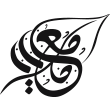Seksyen Kajian Muamalat,
Cawangan Kajian Syariah,
Bahagian Penyelidikan,
Jabatan Kemajuan Islam Malaysia,
Blok A, Kompleks Islam Putrajaya,
No 23, Jalan Tunku Abdul Rahman, Presint 3,
62100 PUTRAJAYA.
: 03 8870 7000 | : 03 8870 7262
: ukkjakim@islam.gov.my
 Hakcipta ©
Hakcipta ©
Jabatan Kemajuan Islam Malaysia
Kemaskini Terkahir : 04 July 2025
Jumlah Pelawat :
Hari ini: 0
Minggu ini: 0
Bulan ini: 0
Keseluruhan: 0





